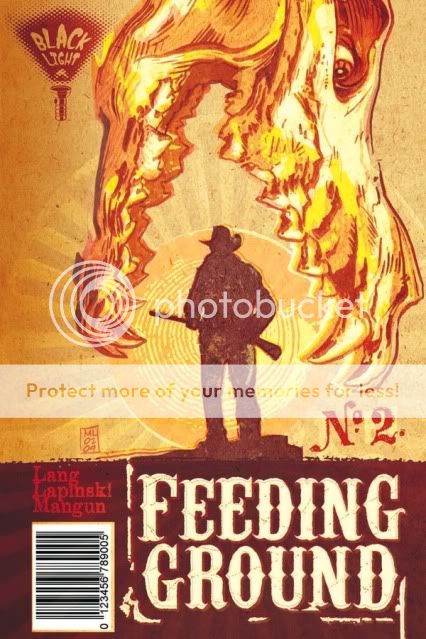
MICHAEL here:
Now that the FEEDING GROUND release date is fast approaching (end of September) I thought I'd cover the structure of our initial pitch.
The first thing we decided was to format the pitch as a comic with cover art and the same dimensions and binding as an ordinary floppy. Any tips we had researched always recommended the inclusion of 5 pages of comic content so this package seemed like a natural fit.

 After a title page and table of contents, we immediately went into our proposal. It essentially starts with a two-sentence summary of the concept as a hook, then expands into a one-page description, and, finally an issue-by-issue breakdown on the next page.
After a title page and table of contents, we immediately went into our proposal. It essentially starts with a two-sentence summary of the concept as a hook, then expands into a one-page description, and, finally an issue-by-issue breakdown on the next page. We treated the text like any conversation with a stranger. Pique someone's interest at first, and then have the information to merit their attention. And, one important tip we were given was to tell your prospective publisher the ending. Mysteries are good for the reader but most publishers would want to know exactly what they're signing on for.
 Also, mythology is not the story. While the story has a beginning, middle, and end, we chose to include a separate page about the overall mythology we were establishing because we felt it was a unique angle on a familiar topic.
Also, mythology is not the story. While the story has a beginning, middle, and end, we chose to include a separate page about the overall mythology we were establishing because we felt it was a unique angle on a familiar topic.From there, we had a page of character sketches and bios and a map to start to populate the world in the mind of the reader. That leads to the section that represents 5 pages of finished material. Of these pages, only one has made it into our final book relatively unchanged. However, an editor will be able to judge basic storytelling ability and execution based on these pages. Additionally, we included a few sample covers to communicate the identity of the series as it would appear on the racks.

Finally, we ended with the full Issue 1 script as well as some additional pin-up art. Unlike screenplays, comic scripts do not require particular formatting but Swifty followed a general screenwriting model. Not required, but we also chose to add panel breakdowns for each page.
 There isn't any one correct way to present your ideas, but, this is the one that worked for us.
There isn't any one correct way to present your ideas, but, this is the one that worked for us.
